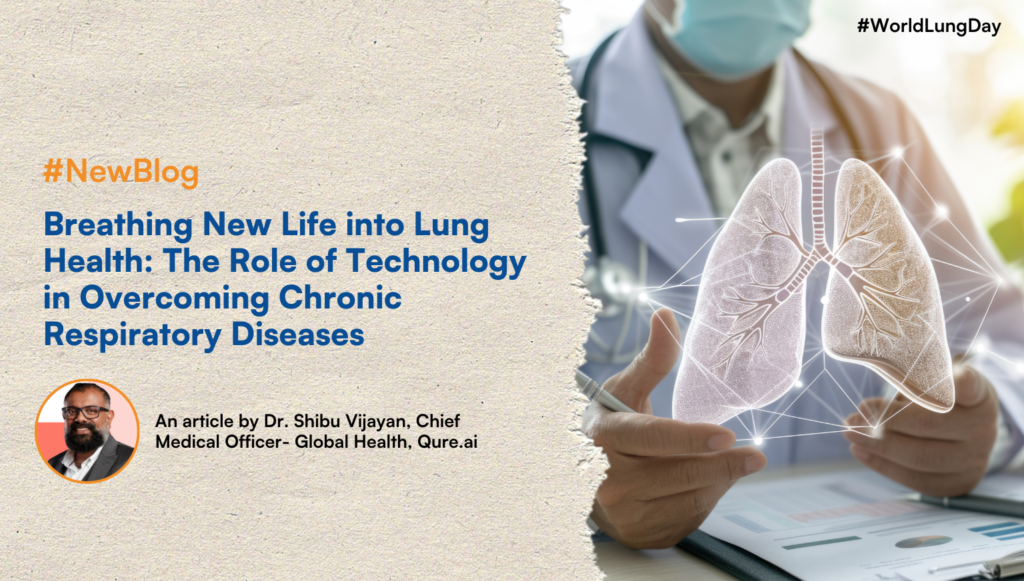
India lacks a dedicated public health program for managing CRDs. For instance, while COPD is covered under the broader National Noncommunicable Disease (NCD) Program (specifically the National Program for Prevention and Control of Cancer, Diabetes, Cardiovascular Diseases, and Stroke [NPCDCS]), the program only briefly touches on COPD, without providing clear guidelines for diagnosis and treatment. Similarly, other CRDs like asthma face significant care gaps, especially in low- and middle-income countries (LMICs). Many asthma patients go undiagnosed due to limited access to diagnostic tools and inadequate training for healthcare providers. Additionally, healthcare systems often prioritize acute conditions, resulting in insufficient availability of essential medications like inhaled corticosteroids. To improve outcomes for individuals with CRDs, it’s crucial to enhance diagnostic capacity, raise public awareness, and ensure access to necessary medications. Furthermore, the absence of focused policy guidance leaves primary care facilities ill-prepared to handle the growing burden of chronic lung diseases.
The Problem: Gaps in Lung Health Care
India lacks a dedicated public health program for managing CRDs. For instance, while COPD is covered under the broader National Noncommunicable Disease (NCD) Program (specifically the National Program for Prevention and Control of Cancer, Diabetes, Cardiovascular Diseases, and Stroke [NPCDCS]), the program only briefly touches on COPD, without providing clear guidelines for diagnosis and treatment. Similarly, other CRDs like asthma face significant care gaps, especially in low- and middle-income countries (LMICs). Many asthma patients go undiagnosed due to limited access to diagnostic tools and inadequate training for healthcare providers. Additionally, healthcare systems often prioritize acute conditions, resulting in insufficient availability of essential medications like inhaled corticosteroids. To improve outcomes for individuals with CRDs, it’s crucial to enhance diagnostic capacity, raise public awareness, and ensure access to necessary medications. Furthermore, the absence of focused policy guidance leaves primary care facilities ill-prepared to handle the growing burden of chronic lung diseases.

Solutions: Integrating Technology and Decentralizing Care
Integrating technology and decentralizing care holds significant potential for enhancing healthcare delivery. By leveraging advanced technologies such as telehealth, electronic health records, and mobile health applications, healthcare systems can improve access to services, streamline patient management, and facilitate real-time communication among providers. This integration allows for more personalized and efficient care, particularly in underserved areas where traditional healthcare access may be limited.
Moreover, decentralization empowers local health workers to make informed decisions based on community-specific data, fostering a more responsive and patient-centered approach to health management. For instance, India’s Health and Wellness Centres (HWCs), a crucial component of achieving Universal Health Coverage (UHC), aim to bring healthcare closer to communities by decentralizing care and promoting community ownership. Managed by skilled health workers such as community health officers, nurses, and ASHAs, these centres provide a comprehensive range of services, including preventive screenings for respiratory conditions. The decentralized approach seen in states like Kerala, which focuses on early detection and community-based management of chronic lung diseases, has shown promising results, including reductions in hospital visits and unnecessary medications.
Leveraging Technology for Lung Health
The integration of technology in lung health management has the potential to revolutionize the diagnosis and treatment of CRDs by enabling early detection, continuous monitoring, and personalized care. The Indian healthcare system is witnessing a promising digital transformation. The Ayushman Bharat Digital Mission (ABDM), part of the broader Digital India initiative, aims to build a national digital health ecosystem that can streamline care delivery, improve quality, and empower healthcare workers through technology.
Artificial intelligence (AI) and digital health tools are making significant strides in the diagnosis and management of lung diseases. For example, portable digital X-rays, coupled with AI-powered interpretations, can bring advanced diagnostic capabilities to the doorstep of primary health centres (PHCs). AI diagnostic tools, as qXR from Qure.ai is able to interpret chest X-rays for CRDs within 30 seconds, reducing the time to detection of a disease. Moreover, technologies such as point-of-care spirometry and mobile-based cough characterization tools hold the potential to democratize respiratory care, allowing PHC staff to deliver quality services without the need for specialized infrastructure.

While technology holds great promise for lung health, the road is fraught with challenges. Integrating AI into healthcare workflows requires training for professionals and overcoming resistance to new technologies. To address these issues, efforts should focus on enhancing data infrastructure, establishing clear regulatory guidelines, and implementing educational programs for providers. Additionally, fostering public-private partnerships can drive research tailored to local healthcare needs. By addressing these gaps, latest technologies can easily integrate into existing care pathways and significantly improve lung health outcomes and the management of chronic respiratory diseases in India and globally.
A Vision for the Future
To truly mitigate the burden of chronic respiratory diseases, we must make CRDs a key focus of essential health service packages. While the current health system is already overwhelmed, the adoption of digital health solutions can ease the burden on healthcare workers. The integration of telemedicine platforms like e-Sanjeevani, coupled with AI-enabled diagnostic tools, will ensure timely and accurate lung disease detection and management. Moreover, integrating platform technologies for CRDs, such as a diagnostic panel, could revolutionize patient care by allowing individuals presenting with respiratory symptoms to leave with a concrete diagnosis and treatment pathway. Similarly, a future where a community health worker can perform a digital X-ray using a portable machine and receive instant AI-driven analysis is no longer a distant dream. As we continue to move towards a digitally enhanced, AI-powered, decentralized healthcare system, this vision is becoming a reality.
About the Author:

Dr. Shibu Vijayan is a public health expert with over 24 years of experience in health systems strengthening and communicable diseases. He specializes in developing and evaluating public health projects for profit and non-profit organizations. Recognized as an International TB expert by the WHO and Stop TB Partnership, he has been the Global TB Technical Director at PATH, where he led the Private Provider Interface Agency (PPIA) and expanded PATH India’s TB & HIV portfolio. He also worked with the WHO on TB control in India and served as a field Epidemiologist with Médecins Sans Frontières in Ethiopia. Currently, Dr. Vijayan is the Chief Medical Officer- Global Health at Qure.ai, focusing on AI-powered solutions for medical imaging and diagnostics in low-resource settings.
